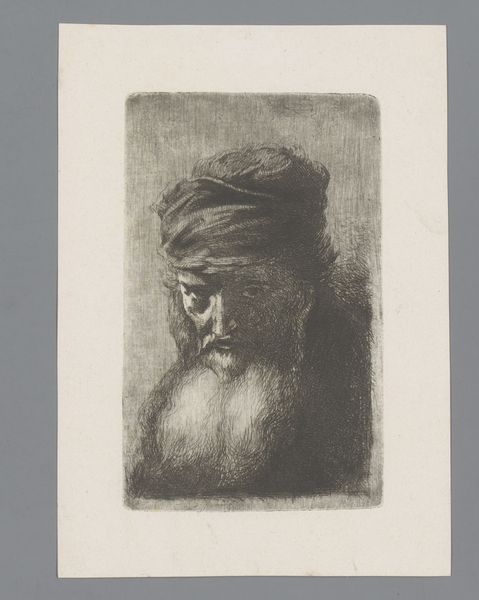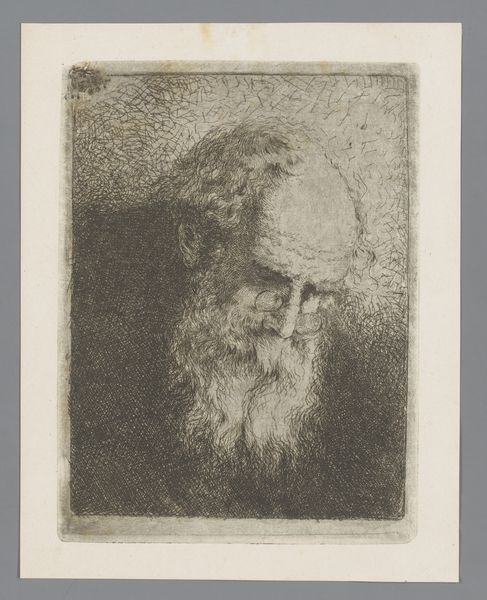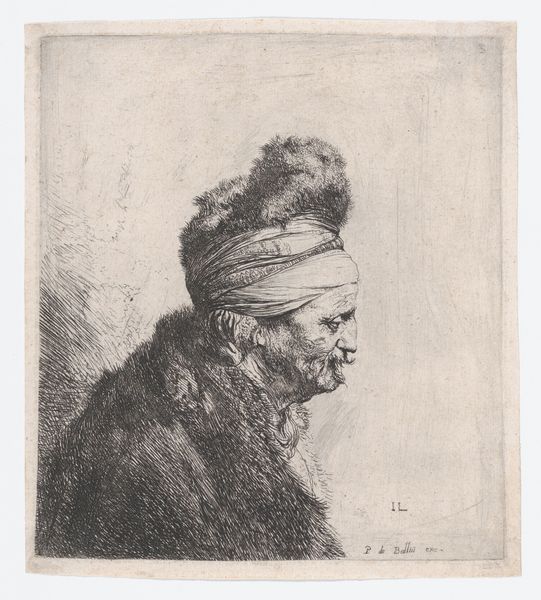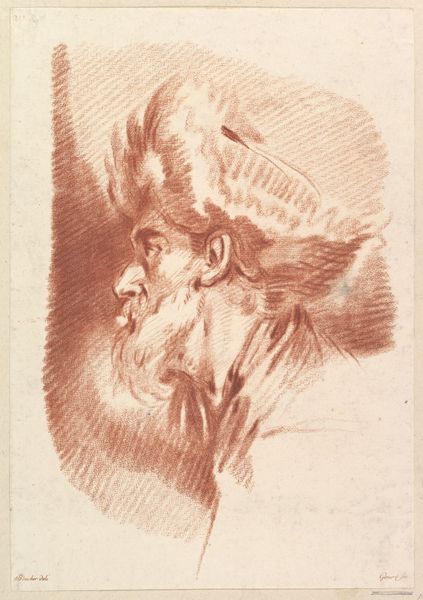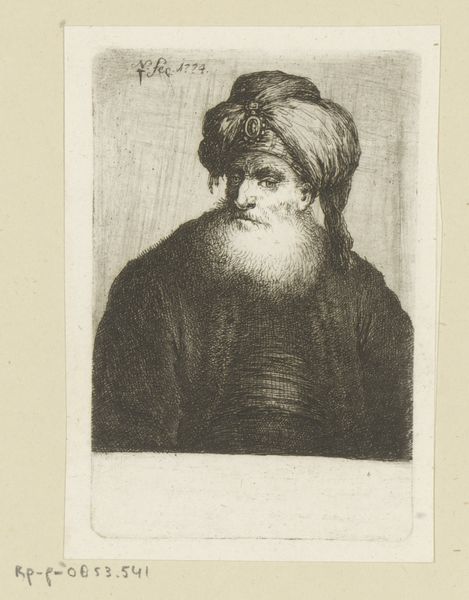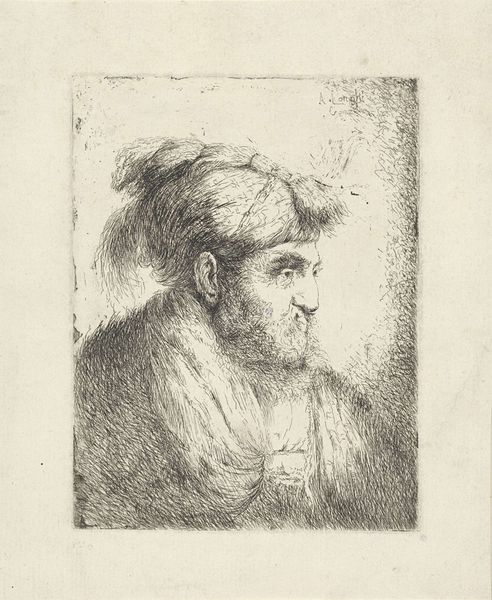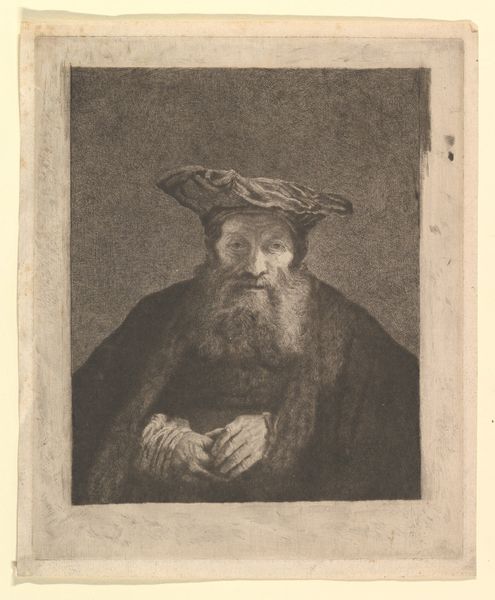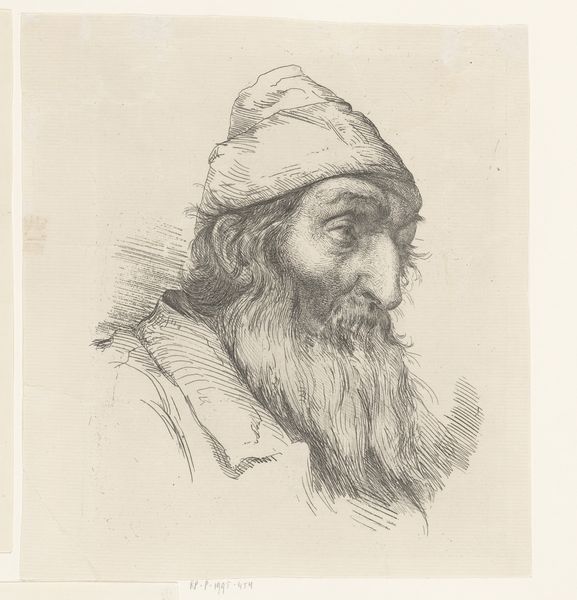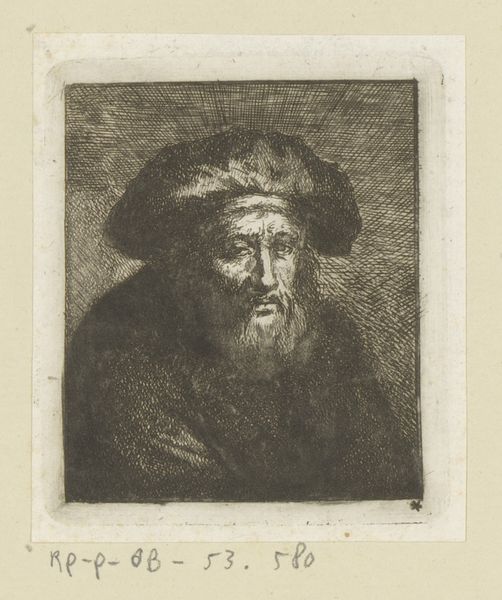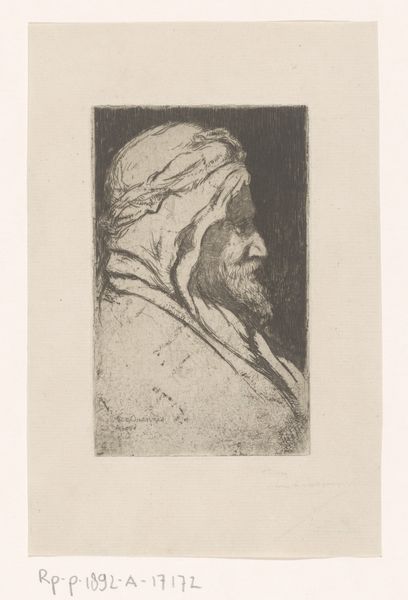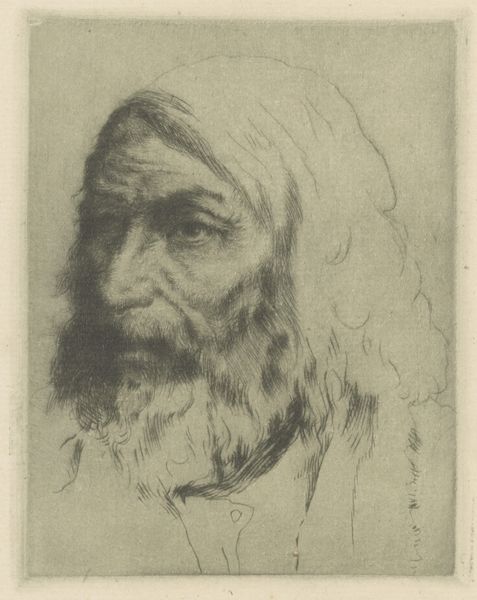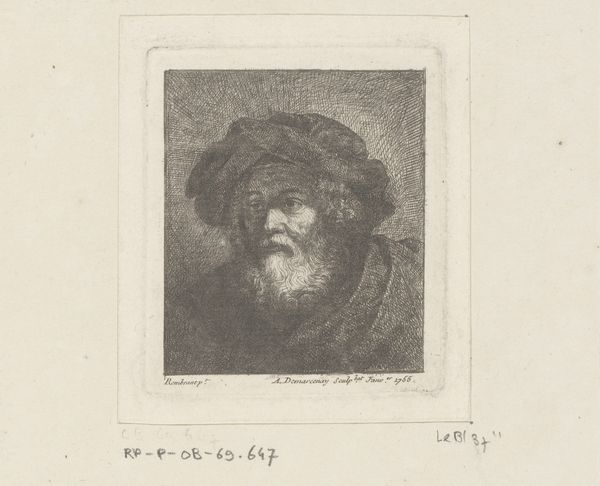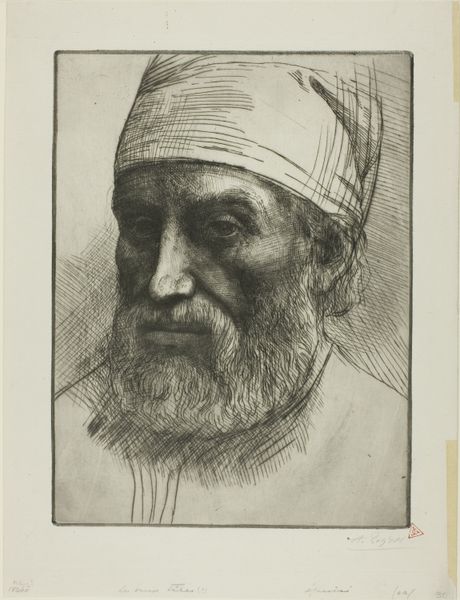
drawing, print
#
portrait
#
drawing
# print
#
realism
Dimensions: height 110 mm, width 69 mm
Copyright: Rijks Museum: Open Domain
Willem Linnig the Second created this etching of a bearded man with a turban. The turban, a headdress that winds around the head, carries profound cultural weight, especially within Middle Eastern, South Asian, and North African traditions. This isn't just headwear; it's a symbol of identity, community, and even spiritual status. Think of the turbans worn by Sikh men, representing honor and self-respect, or the elaborate headdresses of Ottoman sultans, emblems of power and authority. One might even consider the "Phrygian cap," a soft, conical hat seen in ancient Phrygia, later adopted as a symbol of freedom and revolution during the French Revolution. The act of covering the head can signify many things: humility, piety, or concealment. There's a deep psychological pull at play here, a tension between revelation and protection. In our subconscious, the covered head might evoke feelings of mystery, authority, or even repression. It’s an enduring image, reappearing across centuries, each time subtly shifting in meaning, yet always carrying the echo of its past.
Comments
No comments
Be the first to comment and join the conversation on the ultimate creative platform.
